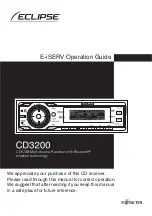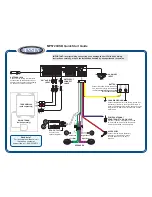
WM8940
50
Rev 4.4
HEADPHONE OUTPUT
The speaker outputs can drive a 16
or 32
headphone load, either through DC blocking capacitors,
or DC coupled without any capacitor.
Headphone Output using DC Blocking Capacitors:
DC Coupled Headphone Output:
WM8940
SPKOUTP
SPKGND = 0V
C1 220uF
WM8940
SPKOUTP
MONOOUT =
‘MUTE’
=> VMID
Figure 23 Recommended Headphone Output Configurations
When DC blocking capacitors are used, then their capacitance and the load resistance together
determine the lower cut-off frequency, f
c
. Increasing the capacitance lowers f
c
, improving the bass
response. Smaller capacitance values will diminish the bass response. Assuming a 16
load and C1
= 220
F:
f
c
= 1 / 2
R
L
C
1
= 1 / (2
x 16
x 220
F) = 45 Hz
In the DC coupled configuration, the headphone “ground” is connected to the MONOOUT pin. The
MONOOUT pin can be configured as a DC output driver by setting the MONOMUTE register bit. The
DC voltage on MONOOUT in this configuration is equal to the DC offset on the SPROUTP and
SPKOUTN pins therefore no DC blocking capacitors are required. This saves space and material cost
in portable applications.
It is recommended to connect the DC coupled outputs only to headphones, and not to the line input of
another device. Although the built-in short circuit protection will prevent any damage to the headphone
outputs, such a connection may be noisy, and may not function properly if the other device is
grounded.
MONO OUTPUT
The mono output, can be used as a line output, a headphone output or as a pseudo ground for cap-
less driving of loads by SPKOUT. Recommended external components are shown below.
AGND
LINE-OUT SOCKET
C1
1uF
R1
100 Ohm
MONOOUT
WM8940
Figure 24 Recommended Circuit for Line Output
The DC blocking capacitors and the load resistance together determine the lower cut-off frequency, f
c
.
Assuming a 10 k
load and C1 = 1
F:
f
c
= 1 / 2
(R
L
+R
1
) C
1
= 1 / (2
x 10.1k
x 1
F) = 16 Hz
Increasing the capacitance lowers f
c
, improving the bass response. Smaller values of C1 will diminish
the bass response. The function of R1 is to protect the line outputs from damage when used
improperly.
















































